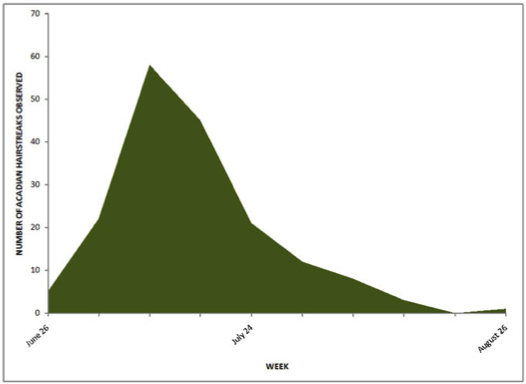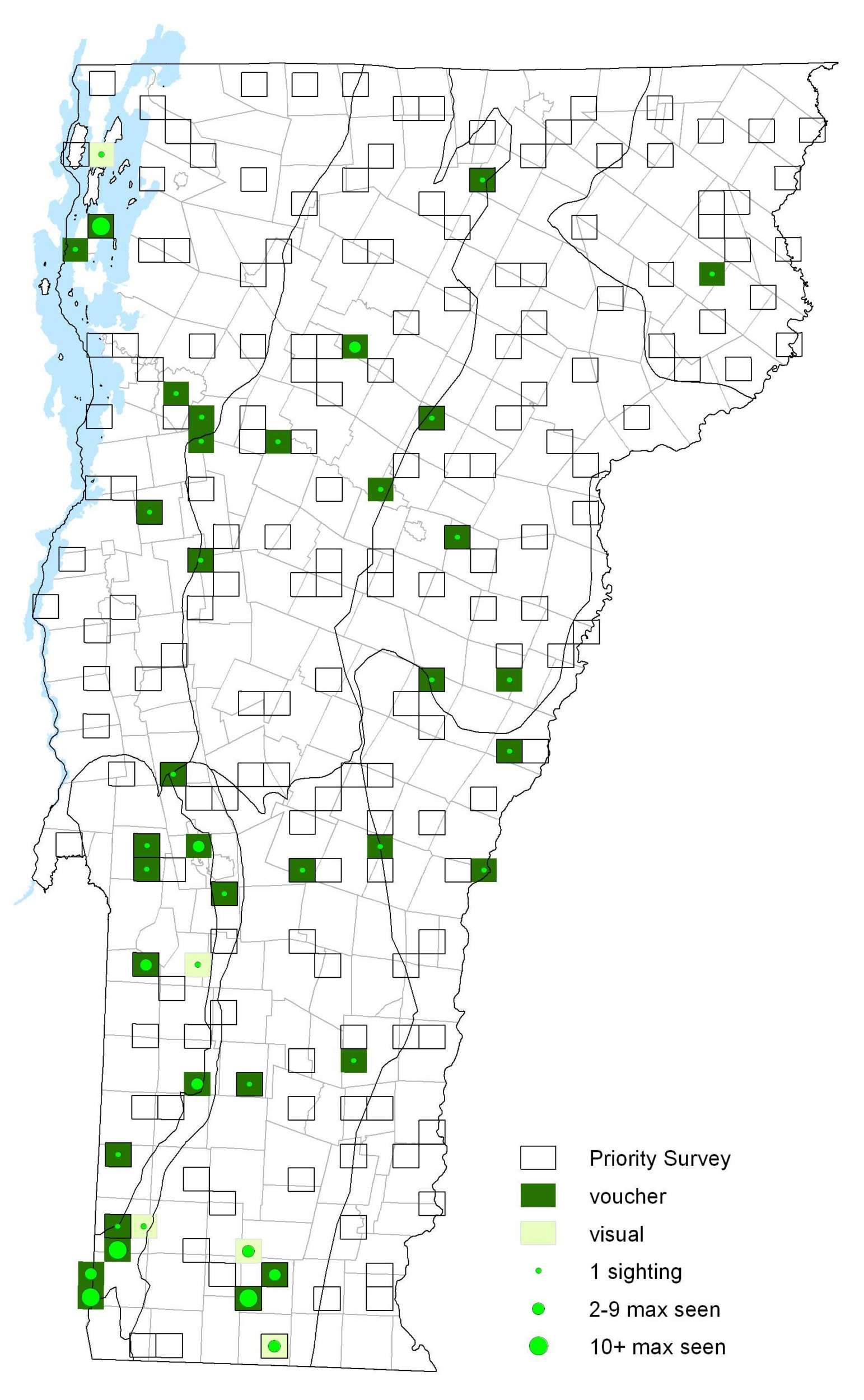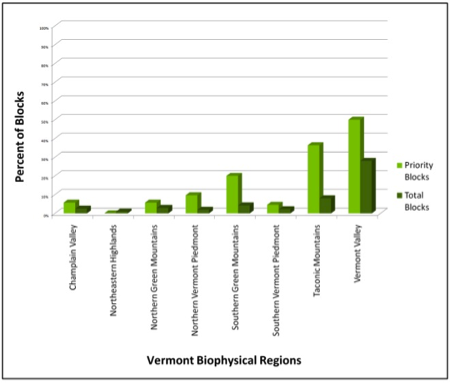|
Resident Conservation Status North American Range |
One of the larger hairstreaks, yet are not known to disperse a great distance. Despite being uncommon across the landscape, these butterflies can be locally abundant in some large colonies. Males perch on low vegetation while watching and waiting for females, and patrol periodically. Eggs are laid on hostplant twigs and hatch the following spring. Caterpillars feed on the leaves and are tended by ants.
Identification
Large for a Satyrium. One tail on each hindwing. Upperside brown-gray. Underside of hindwing gray; blue marginal spot is capped with orange; row of orange submarginal spots capped with black; round black spots form postmedian row.
Flight
One brood flying from the end of June through the end of August with greatest abundance at the beginning of July. Extreme dates: 21 June 2004 in Bennington (K. Hemeon) and 22 August 2002 in Morristown (C. Gifford).
Distribution and Habitat
Acadian Hairstreak colonies were found scattered throughout Vermont, but rarely in the Northeast Highlands. The largest colonies tended to be in the Champlain islands and southwestern Vermont.
Their primary habitats were damp meadows, marshes and wet woodlands. Adults nectar from a variety of sources such as Meadowsweet (Spiraea alba), milkweeds (Asclepias), New Jersey Tea (Ceanothus americanus), and thistles (Cirsium). Larval hostplants include various willow species such as Black Willow (Salix nigra) and Silk Willow (Salix sericea).







